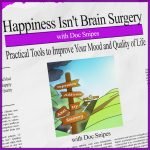
Dialectical Behavior Therapy Skills
Problem Solving Strategies
Presented by: Dr. Dawn-Elise Snipes
Executive Director, AllCEUs
Objectives
~ Review the 4 options for problem solving
~ Go over problem solving steps
~ Review concepts such as force field analysis, root cause analysis, backward chaining
Problem Solving Options
~ Stay Miserable or, Make Things Worse, by creating other, new problems for yourself
~ Tolerate The Problem this involves accepting that the problem is happening, and tolerating both the problem itself and your responses to the problem
~ Feel Better About The Problem by changing or regulating your emotional and cognitive response to the problem
~ Solve The Problem this involves changing the situation, or avoiding, leaving, or getting out of the situation for good
Problem Solving Steps
~ Wise Mind What Skills
~ Observe and describe the situation
~ Check the facts
~ Identify the goal in solving the problem
~ Brainstorm solutions
~ Choose a solution that is likely to work
~ Put the solution into action
~ Evaluate the outcomes
Observe and Describe Problem and Context
~ Who is involved
~ Don’t jump to who is causing the problem
~ When did this happen
~ Where did this happen
~ What
~ Is the present situation
~ Are my contributions, vulnerabilities
~ Are my current thoughts and feelings
~ Are others contributions, vulnerabilities
Defining the Problem: Root Cause Analysis
~ It's amazing how much you don't know about what you don't know.
~ Get input from other people who notice the problem and who are effected by it, one at a time
~ Write down your opinions and what you've heard from others.
~ Seek advice to verify your impression of the problem.
Root Cause Analysis
Chain Analysis
Check the Facts
~ Is this a reaction to the environment or your thoughts?
~ Are you using emotional or factual reasoning?
~ Increase mindfulness to the facts of the present situation
~ Look beyond yourself to the other person and the context (Consider the entire picture)
~ Are you using all or none reasoning? (Middle path)
Check the Facts
~ Do the emotions fit the facts (Why am I feeling this way)
~ No (It is not an effective emotional response)
~ Radical Acceptance
~ Identify opposite thoughts
~ Yes (It is an effective emotional response)
~ Radical Acceptance
~ Distress Tolerance
~ Problem Solve (Wise Mind)
Identify the Goal
~ Stay Miserable
~ Tolerate (Distress Tolerance, Emotion Regulation)
~ Feel Better (Change your thoughts and feelings about the situation)
~ Solve (Change the situation)
Brainstorm Solutions
~ Distress Tolerance (IMPROVE and ACCEPTS)
~ Emotion Regulation: Address Vulnerabilities
~ Change Thoughts
~ Middle path
~ Focus on the negative (don’t romanticize) to force a behavior change
~ Cheerleading thoughts (SMS Message scheduler)
~ Relapse Prevention Plan/Purposeful Action
~ Identify alternate possibilities
Brainstorm Solutions
~ Change Feelings
~ Focus on positive stuff to get happier
~ Attitude of gratitude
~ What makes you happy
~ Change the situation
~ Remove or eliminate the trigger
~ Use interpersonal effectiveness skills to address the situation (seek to understand and create a win/win)
~ Add something to alter the situation
Force Field analysis
Choose the Best Option
~ This is the best option for you that is effective at helping you move closer to your goals (long term) and stay true to your values, and realistic.
~ Integrates the logical mind and the emotional mind
Take Action
~ Many time people get stuck because they know what needs to be done, but don’t know where to start.
~ Identify steps you need to take to solve the problem
~ First I need to…
~ Then I need to…
Evaluate
~ Once you start the process, continually evaluate.
~ Adjust when necessary
Other Tips
~ Focus on the solved state.
~ Be clear about all your goals and objectives.
~ What are we trying to achieve?
~ What are we trying to preserve?
~ What are we trying to avoid?
~ What are we trying to eliminate?
~ Expand your definition of “Define the Problem.”
~ Think of problem solving as a cover-the-bases activity.
~ Draw diagrams and otherwise picture the structure of the problem.
~ Take the concept of cause with a grain of salt.
~ Watch out for “disconnects.”
~ One person focusing on the problem and the other focusing on the solution
~ Be aware of your own blinders.
~ Develop your own system for solving problems.
~ Research the subject matter.
Other Tips
~ Focus on the solved state.
~ Be clear about all your goals and objectives.
~ What are we trying to achieve?
~ What are we trying to preserve?
~ What are we trying to avoid?
~ What are we trying to eliminate?
~ Expand your definition of “Define the Problem.”
~ Examine the current situation
~ Examine other similar situations
Other Tips
~ Draw diagrams and otherwise picture the structure of the problem.
~ Take the concept of cause with a grain of salt.
~ Watch out for “disconnects.”
~ One person focusing on the problem and the other focusing on the solution
~ Be aware of your own blinders.
~ Develop your own system for solving problems.
~ Research the subject matter.
Summary
~ When feeling distress, it is important to first get into the wise mind
~ Problem solving involves observing and objectively describing
~ The situation
~ Your goal for resolving the situation
~ The method for achieving your goal
~ Any obstacles and ways to address them
~ Any enabling/motivating forces
~ The plan for achieving the goal
